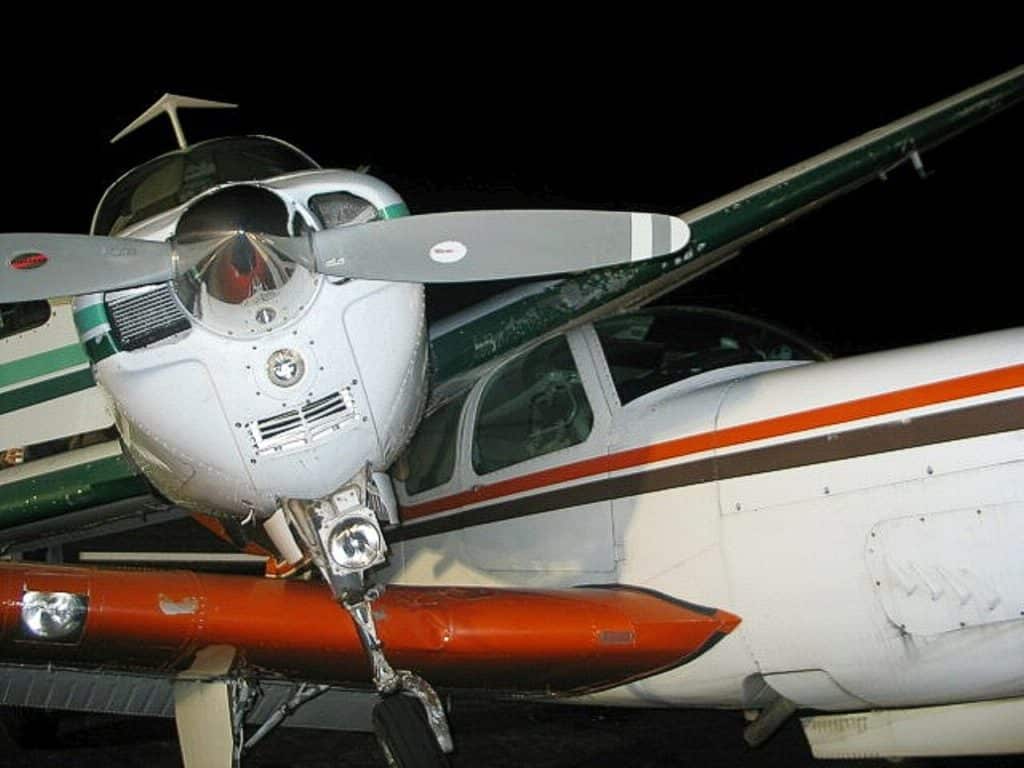When repairs are covered by insurance, it’s the owner’s job to keep things under control.
By the time he contacted me, the aircraft owner—let’s call him Fred—was boiling mad. Fred had bought an airplane last year, and the pre-buy and subsequent annual inspection gave his new-to-him bird a clean bill of health. Yet even before Fred ferried the airplane to his home base, mechanical gremlins started to appear.
The alternator failed. Some serious exhaust issues required repair. These and various other discrepancies started Fred thinking that perhaps the clean pre-buy and annual were a bit overoptimistic.
Then ATC reported the transponder wasn’t working. Fred sent it to an avionics shop, who told him it was an old tube-type unit that was uneconomical to repair, and that he’d be money ahead installing a new transponder.
Just prior to ferrying the airplane to the avionics shop, Fred discovered that the autopilot was malfunctioning. He had to pull a circuit breaker stop it from alarming. Then as he entered the pattern to land, the whole avionics stack went dark and Fred wound up landing no-radio.
Fred taxied the plane to his home-field shop, but his A&P was unable to duplicate the failures, nor find any electrical glitch that might have caused them. Fred discussed these issues with the avionics shop, and they agreed that they’d look at them once Fred delivered the airplane to them.
Incident flight
A few days later, Fred took off to ferry the airplane to the avionics shop. Shortly after takeoff, he engaged the autopilot, and it failed in the same way as before. He pulled the circuit breaker. Soon afterwards, his avionics stack went dark. As Yogi Berra famously said, “it was déjà vu all over again.”
Fred tried to contact ATC on his handheld transceiver, but to no avail. Shortly afterwards, he noticed that most of the engine instruments were reading zero, and the oil pressure indication was only 20 PSI. He wasn’t sure whether the oil pressure indication was accurate, but since “the engine didn’t sound right” he decided to make a precautionary landing at a small airstrip nearby.
Approaching the airstrip, Fred attempted to lower the gear electrically without success (no surprise there), then pulled the gear breaker and performed the emergency gear extension procedure. That didn’t feel right to him either, but at this point he was on short final and committed to land. He touched down as slowly and gently as possible, but as the aircraft settled onto the mains, one gear leg collapsed, then the other, and the airplane skidded on its belly for about 100 yards before coming to a stop.
Fred egressed the airplane, a bit shaken but otherwise okay. Some local fellows who witnessed Fred’s arrival helped move the aircraft off the runway.
Fred notified his insurance company. Then the real fun began…

Repairs and insurance
To quote Fred’s email:
My plane was in the shop for a year. I was on them every few weeks asking how it was coming along. Their standard answer was: next week, next month, etc. Then, last week, the shop informed me that my insurance would cover less than $60K of the repair cost, and that I would need to make up the remaining $23K that the insurance company wouldn’t pay for. The shop said that they’d found numerous mechanical discrepancies that should have been fixed before the gear-collapse incident occurred.
Then the insurance adjuster called me. He wanted to know if I had the plane back yet, and why I had not responded to his letter stating that the insurance company had paid for $58K and I needed to pay for about $3K. I told the adjuster that the shop was claiming that I owed $23K, but that I didn’t think I should be paying for anything. The adjuster said that he’d check with the shop again. Later, the adjuster told me that after conferring with the shop, he was certain that the balance of the repairs were my responsibility. End of discussion.
I bought the plane just a few months before the wreck. I paid an A&P/IA more than $1,500 for a pre-buy and fresh annual inspection, and he gave the airplane a clean bill of health. Then, within the first few flights, all sorts of problems began to show up.
At this point, I have not signed the insurance company’s release, and the airplane is still sitting in the shop. Any thoughts for me?
No practical recourse
I told Fred that in my opinion he had no practical recourse but to pay the $23,000 of the repair bill that the insurance company declined to pay. I explained that the insurance company is only obligated to pay to repair damage that occurred during the gear collapse incident. They aren’t obligated to pay to repair any pre-existing discrepancies, including the electrical problems that caused Fred to make the precautionary landing where and when he did. (Had Fred landed without incident, the insurance company would not have been liable for anything.)
I advised Fred that his principal mistake was authorizing the repair shop to make repairs to his airplane without (1) obtaining a detailed written estimate for those repairs, and then (2) ensuring that the insurance company pre-approved those repairs and estimates and agreed in advance to pay for them. Instead, Fred left it to the shop and insurance company to work things out. The result was clearly not what Fred had in mind. By failing to manage the transaction in a proactive fashion, Fred lost control of the situation and relinquished control to the adjuster and mechanic whose best interests are not coincident with his own.
The shop would be the first to testify that the additional $23,000 on their invoice was for repairs to pre-existing discrepancies that existed before the gear collapse. The insurance company would testify (correctly) that it is not responsible for paying for such pre-existing discrepancies. Their responsibility is strictly to restore Fred’s airplane to the same condition it was immediately prior to the incident. It isn’t to make Fred’s aircraft airworthy (since it was pretty clearly unairworthy prior to the precautionary landing), nor to put Fred in a better position than he was prior to the gear collapse (known as “betterment” and explicitly disclaimed in every aircraft insurance contract).
I told Fred that if he was still convinced the insurance company was wrong to deny paying for the additional $23,000, he could theoretically bring a bad-faith lawsuit against the company. There are lots of lawyers who specialize in such lawsuits, and often take such cases on a contingency-fee basis. But I advised Fred I thought it highly unlikely that an attorney would be willing to take his case, both because Fred undertook the incident flight with known mechanical deficiencies, and because the claimed damages were far too small to justify the cost of litigation.
Short of litigation, most insurance companies provide an informal review mechanism for appealing claim disputes. However, without a rock-solid paper trail to bolster your case, there’s little chance of prevailing. Lacking written repair estimates and adjuster pre-approvals, and with his mechanic agreeing with the insurance adjuster that the $23K was to repair pre-existing discrepancies, Fred was pretty much out of luck.
I also told Fred that I didn’t think he had any practical recourse against the A&P/IA he hired to do the prebuy and annual inspection. No mechanic has a legal obligation to find and fix every problem with an airplane, only to use his best efforts. For the A&P/IA to be liable for civil damages, Fred would have to convince a jury that the mechanic failed to do something that “a reasonable and prudent mechanic” would have done, and that’s not easy. The fact that Fred’s aircraft problems eluded several independent mechanics, not just one, makes Fred’s burden of proof nearly impossible.

Even if Fred could prove that the mechanics were negligent, it would be difficult to show that their negligence caused Fred any monetary damages. After all, had the mechanics found all these problems prior to the incident flight, presumably Fred would have had to pay to have them repaired (arguably to the tune of $23K).
The bottom line is that the legal system seldom offers any practical recourse in situations like the one Fred faced. I told him he should resign himself to paying the $23K and chalk it up to tuition.
Lessons learned
It’s essential for owners to manage their maintenance actively, and always to get detailed cost estimates in writing before authorizing any work on an aircraft. This is true for any maintenance transaction, but especially true for one that involves insurance reimbursement or warranty work. In such cases, a prudent owner will always submit the shop’s written estimates to the insurance company or manufacturer, and obtain written pre-approval that the repair costs will be paid for by insurance or warranty before authorizing the shop to start work.
An owner who handles such things verbally, or simply allows his mechanic to do whatever he feels needs to be done, is quite likely to have an acute case of sticker shock. If insurance or warranty is involved, the owner will be at the mercy of the insurance adjuster or warranty administrator as to what gets paid and what doesn’t.
In my experience, aircraft owners often do a miserable job of managing situations like this. The damage to their airplanes has them stressed out emotionally, and their business instincts often fly out the window. But maintenance management is always the owner’s responsibility, and abdicating that responsibility to the shop, mechanic, or insurance adjuster almost always has unwelcome consequences.
You bought a plane to fly it, not stress over maintenance.
At Savvy Aviation, we believe you shouldn’t have to navigate the complexities of aircraft maintenance alone. And you definitely shouldn’t be surprised when your shop’s invoice arrives.
Savvy Aviation isn’t a maintenance shop – we empower you with the knowledge and expert consultation you need to be in control of your own maintenance events – so your shop takes directives (not gives them). Whatever your maintenance needs, Savvy has a perfect plan for you: